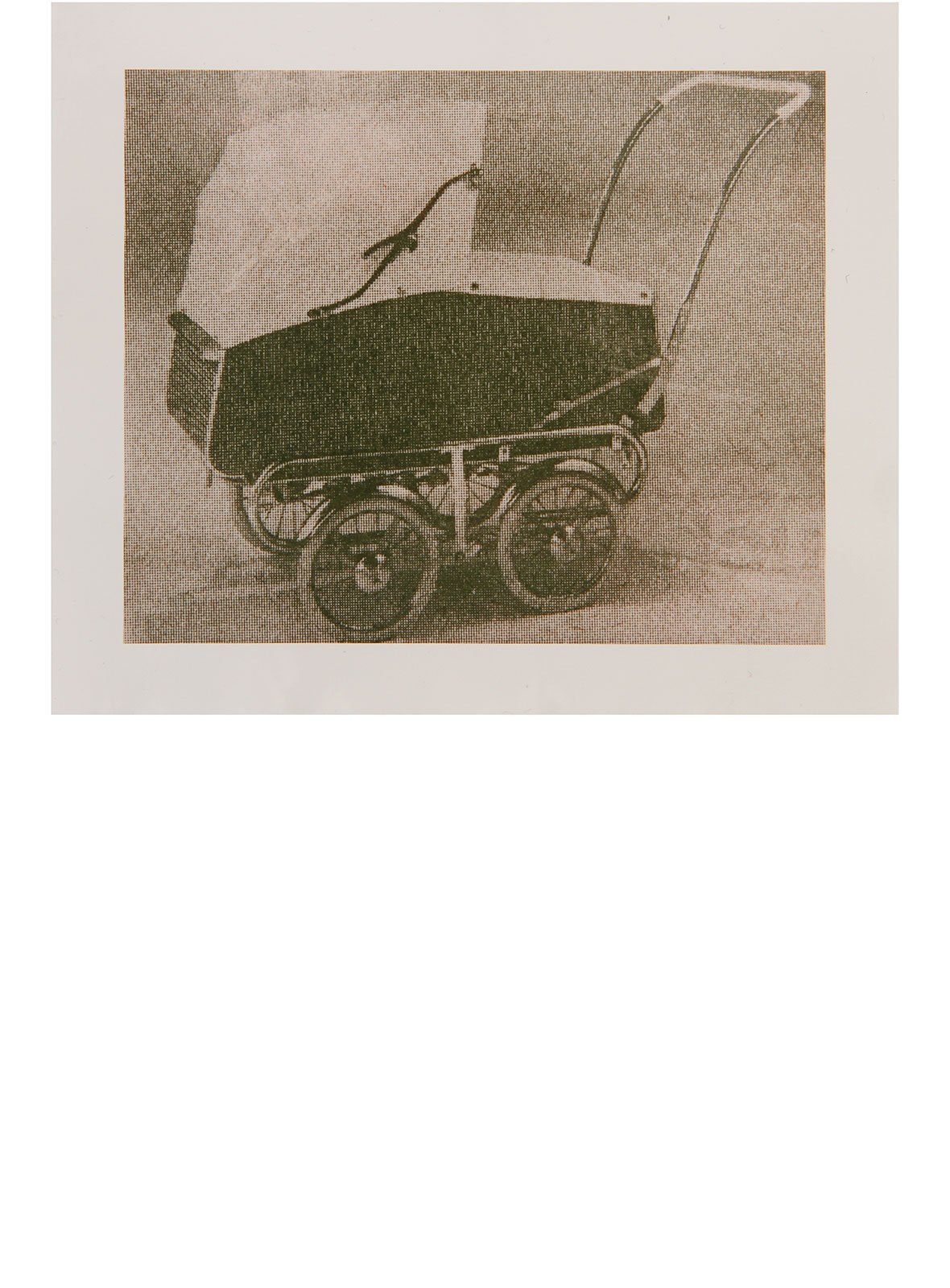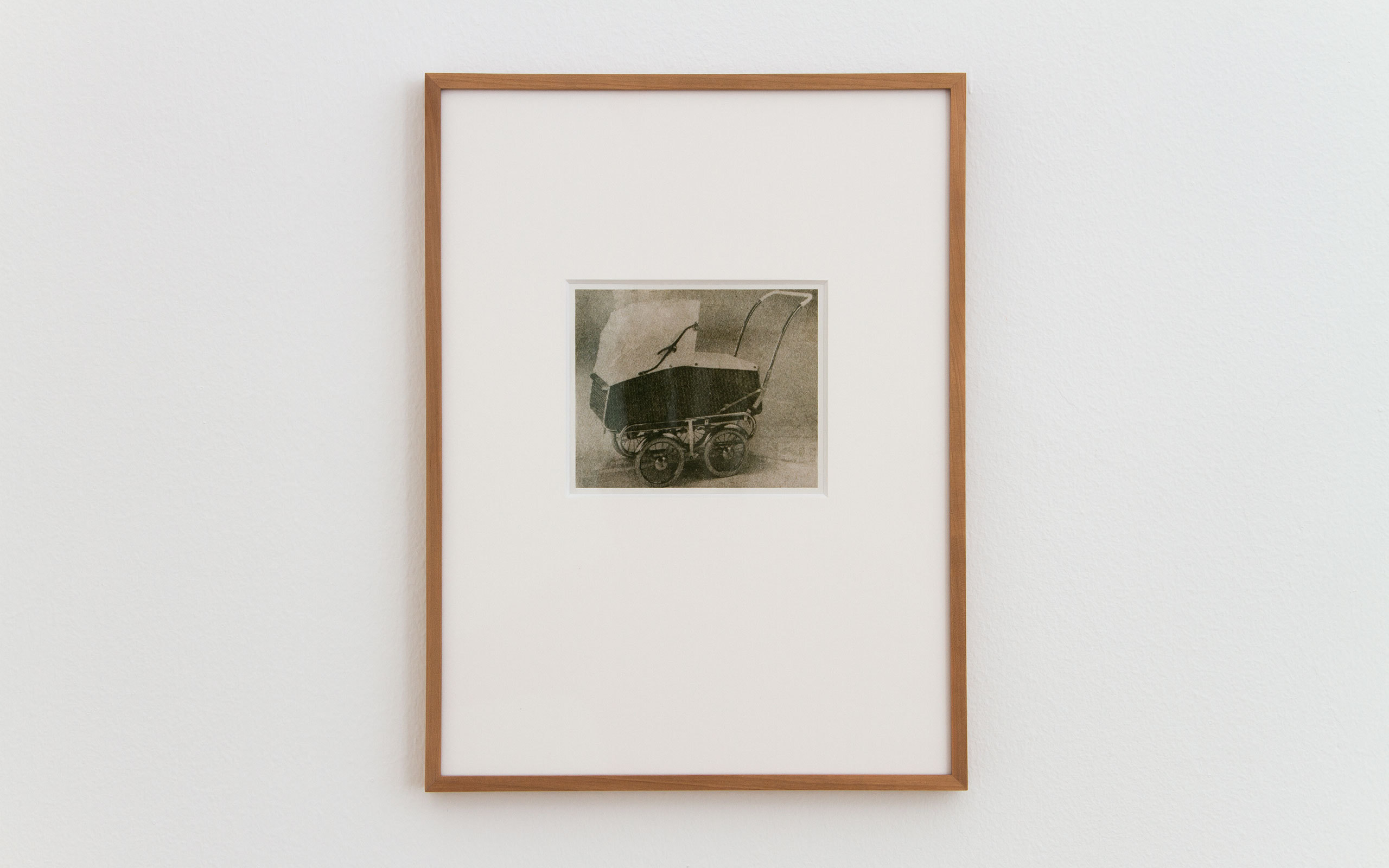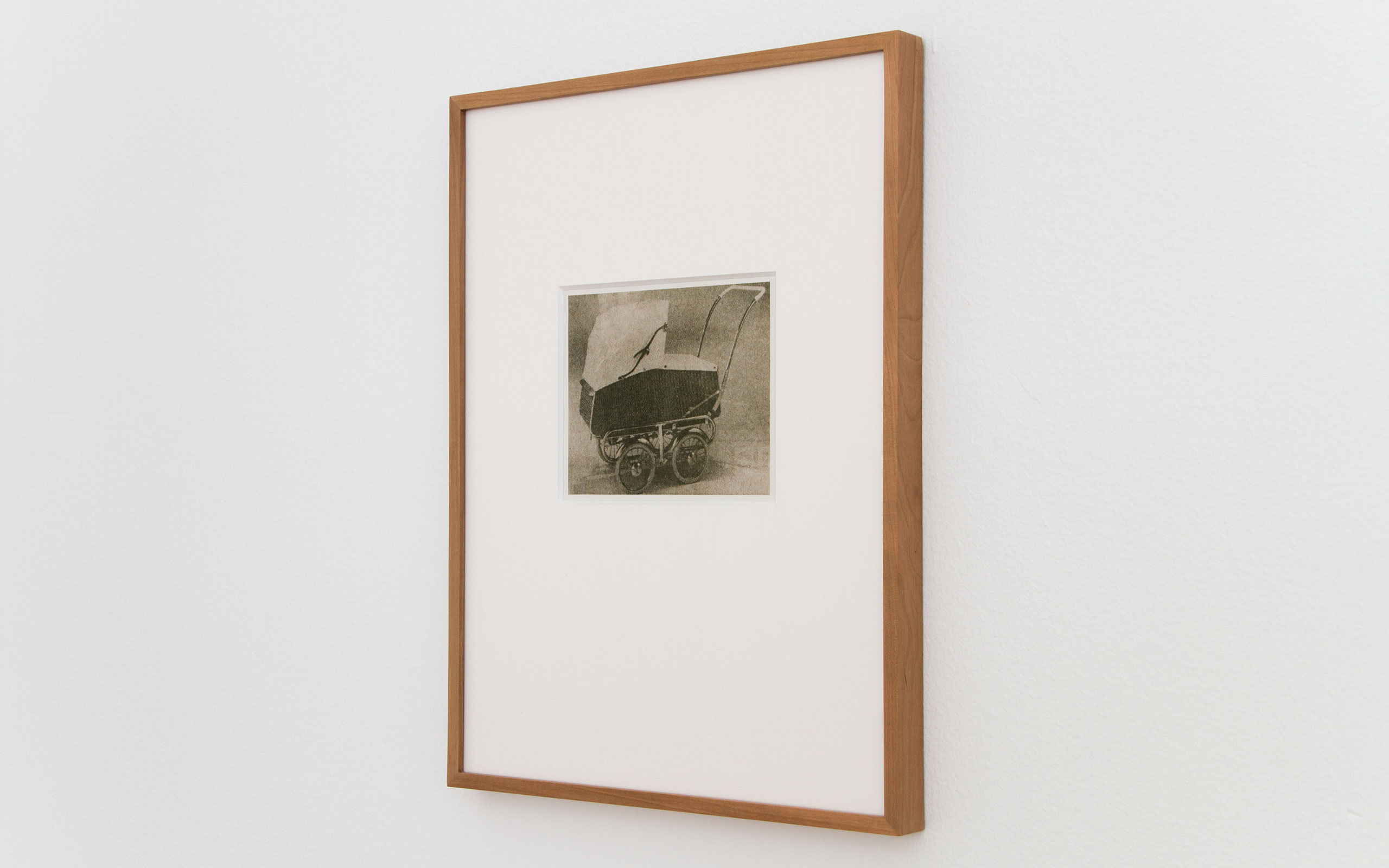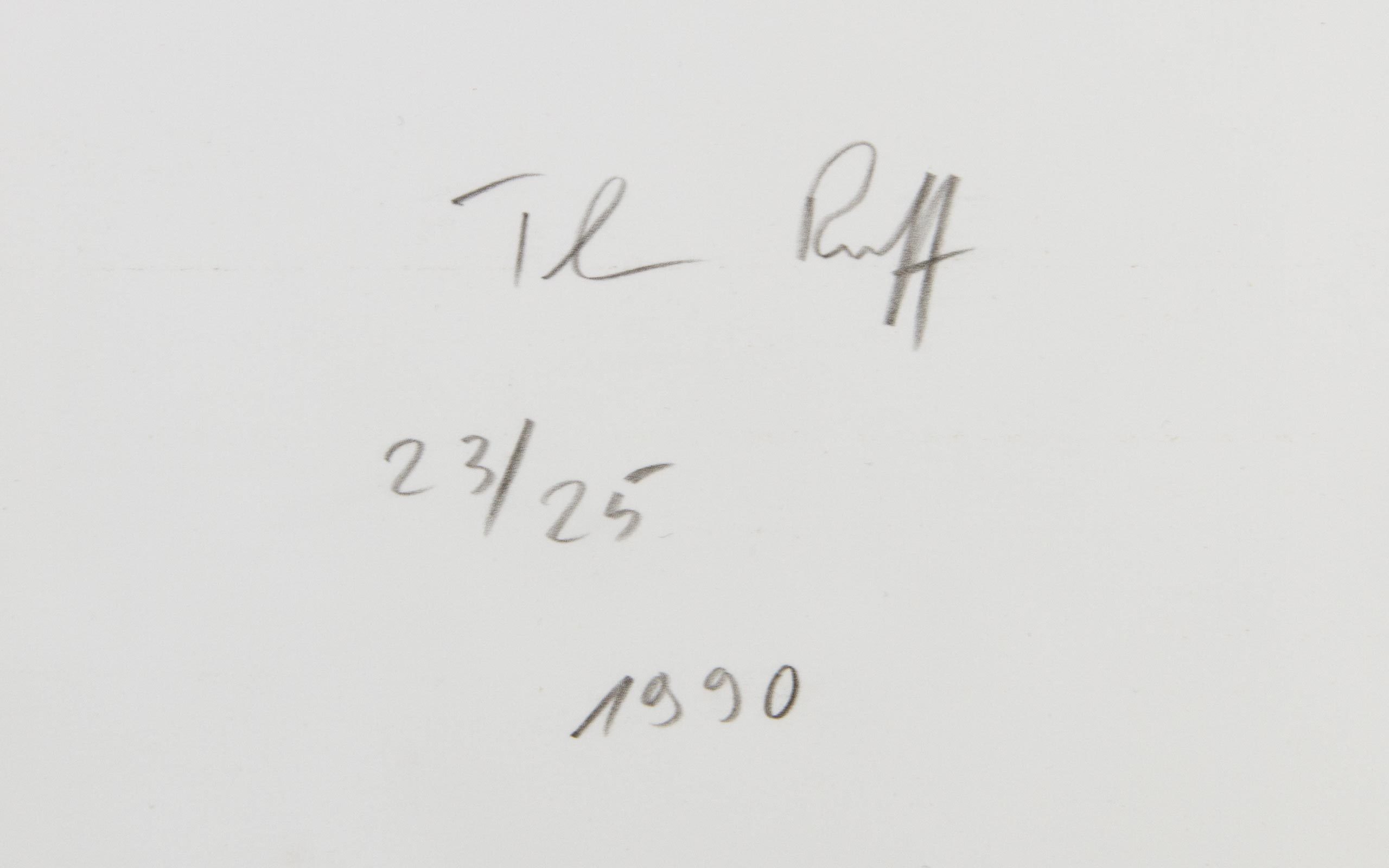
Photoprint color in cherrywood frame
14,4 x 16,9 cm (5.7 x 6.6 inches)
40 x 30 cm (15.7 x 11.8 inches) framed
Edition of 25
2.200 Euro
Includes 13% VAT. Please contact us for shipping options, and for pricing in other currencies.

Photoprint color in cherrywood frame
14,4 x 16,9 cm (5.7 x 6.6 inches)
40 x 30 cm (15.7 x 11.8 inches) framed
Edition of 25
2.200 Euro
Includes 13% VAT. Please contact us for shipping options, and for pricing in other currencies.

In his edition titled Zeitungsfoto 021 Thomas Ruff reproduces a newspaper photograph to the width of a double-column and strips the picture of its caption. Once removed from the context of the newspaper report, the image of a pram loses the originally intended meaning.
Thus, the picture of a pram, symbol of motherly care, opens up new forms of story-telling: It is the evening rush hour in Braunsfeld, a neighbourhood in Cologne, on that autumn day of September 1977. A young couple stands at a street corner of the villa district by the municipal forest. Around 5:28 pm a limousine turns around the corner, followed by an escort vehicle with three men inside. Suddenly, a yellow Mercedes moves in reverse and blocks the road, bringing the convoy to a halt. The RAF terrorists Peter-Jürgen Boock and Sieglinde Hofmann pull out two rifles from the blue pram and open fire. Hanns Martin Schleyer, president of the employer federation, is kidnapped at this event. His driver and three bodyguards lose their lives. It is one of the darkest days in the post-war history of Western Germany, on which a seemingly lapidary pram played a key role.

Zeitungsfoto021 Photoprint color. Framed in cherrywood frame. Double-sided anti-reflective and color-neutral optical interference glass in museum quality.

»I have been cutting out these newspaper photographs for ten years, because they were really noticeable. Someone sends off a photographer (...) who makes every attempt to take a good picture. Later these photographs are deprived of their own quality, becaue they are made to fit into the grid of newspaper column grid and line count. (...) And sometimes it happens that a newspaper photograph has retained a certain charm, photographic qualities, and I don’t want them to get lost.« Thomas Ruff, 1995
Best known for his larger than life, dead-pan portraits, his unmediated shots of commonplace interiors, and his seemingly straightforward photographs of architecture, Thomas Ruff has quietly approached many familiar genres, and proceeded to discreetly reinvent them.
Between 1981 and 1991, Thomas Ruff compiled around 2,500 newspaper photos from German newspapers for his series Zeitungsfotos (newspaper photographs), focussing on images from every knowledge sector and sphere of life. Based on his archive, the artist selected 400 images, which he reproduced in double their original size, across two columns, omitting the explanatory captions.
This manipulation arises out of an interest in the relationship between photographer and editor, and their influence on information value. Through Ruff’s intervention, the images are relieved of their importance. Moreover, he raises the question to what extent images, as information media, can only operate in a specific grid.
»I care more for the image than for the actual reality.« Thomas Ruff
Thomas Ruff (*1958 in Zell am Harmersbach, Germany) studied at the Düsseldorfer Akademie in the 70s, in the class of Bernd and Hilla Becher, alongside fellow students Andreas Gursky, Candida Höfer, Axel Hütte and Thomas Struth. He started out to photograph interiors in his immediate surrounding. Unlike his teachers, he however photographed in colour.
Ruff shows the superficial wherever the viewer feels compelled to interpret depth: “I believe that photography can only reproduce the surface of things.“, he once said. He explores a breadth of themes that is reflected in the range of techniques he employs: analogue and digital exposures taken by the artist exist in his practice alongside computer generated imagery, photographs from scientific archives, and pictures culled and manipulated from newspapers, magazines, and the Internet.
Thomas Ruff is among the most influential figures of the contemporary art world. His work is represented in the collections of museums worldwide, among others The Art Institute of Chicago; Dallas Museum of Art; Hamburger Bahnhof - Museum für Gegenwart, Berlin; Hirshhorn Museum and Sculpture Garden, Washington, D.C.; The Metropolitan Museum of Art, New York; Moderna Museet, Stockholm; Solomon R. Guggenheim Museum, New York; and Stedelijk Museum voor Actuele Kunst (S.M.A.K.). Thomas Ruff lives and works in Düsseldorf, Germany.